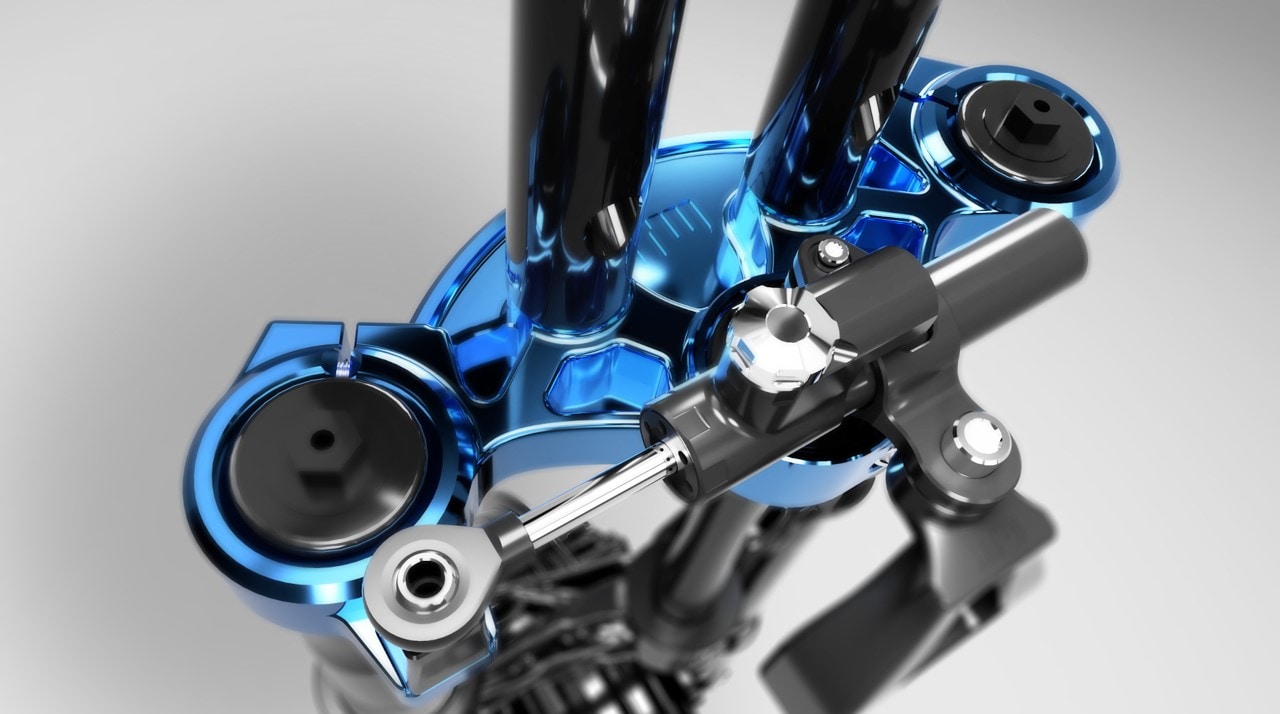Using generative design technology to create optimized tripple clamps that are 23% lighter
After generative design delivered a range of potential designs, Butterworth selected one and spent approximately 20 minutes editing it to suit the characteristic MJK Parts style. Using generative design for 2.5 or 3-axis milling helped to reduce weight by 23% at comparable costs while not sacrificing safety.

